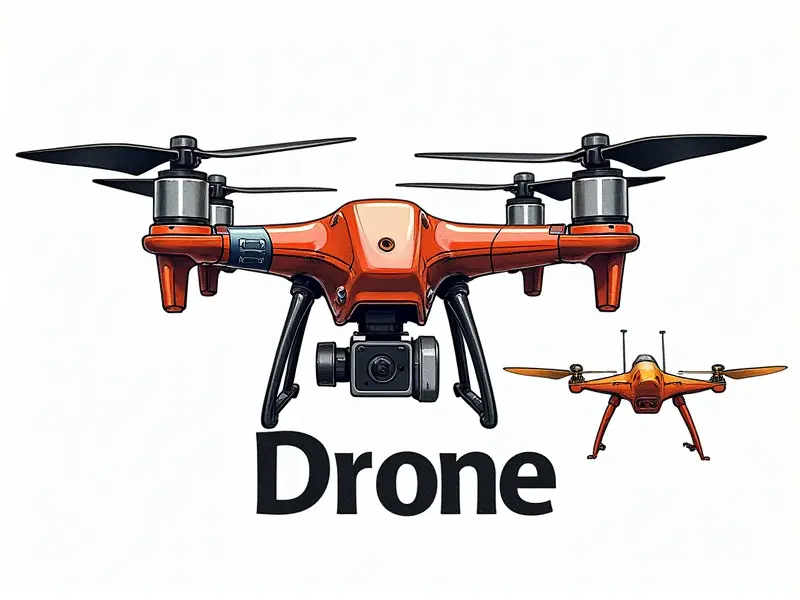What is PID control in drones?

Understanding Drone PID Control Basics
PID control, or Proportional-Integral-Derivative control, is a critical component of drone flight stability and performance. It is an algorithm used to minimize the difference between the desired setpoint (target) and the actual measured process variable by adjusting the control outputs in real-time.
Mastering PID Control for Drones
To master PID control, it's essential to understand its three main components:
- Proportional (P): This term adjusts the control output based on the current error between the setpoint and measured value.
- Integral (I): The integral component accumulates past errors over time to eliminate steady-state error.
- Derivative (D): This term predicts future trends by analyzing changes in the current error, providing stability and reducing overshoot.
Why PID is Crucial for Drones
PID control plays a pivotal role in maintaining flight stability and performance. It ensures that drones can handle varying conditions such as wind gusts, terrain changes, and payload variations without losing balance or crashing.
Optimizing Flight Stability with PID
To optimize flight stability, drone pilots must fine-tune the PID parameters:
- Tuning Techniques: Common methods include manual tuning, Ziegler-Nichols method, and auto-tuning features in flight controllers.
- Balancing Act: Properly balancing P, I, and D values is crucial for achieving smooth and stable flights without excessive oscillations or sluggish responses.
Enhancing Performance with Drone PID
PID control enhances drone performance by:
- Increasing Responsiveness: By adjusting the P term, drones can react more quickly to changes in conditions.
- Maintaining Precision: The I term helps maintain precise altitude and position control over extended periods.
- Avoiding Overshoot: Proper D tuning prevents sudden movements that could destabilize the drone.
The Role of PID in FPV Racing Drones
In fast-paced FPV racing, precise and responsive control is paramount. PID tuning ensures that drones can navigate tight courses with agility and stability:
- Quick Corrections: Fine-tuned P values enable rapid corrections to maintain course.
- Avoiding Oscillations: Careful D tuning prevents oscillations during high-speed maneuvers.
PID Tuning Tips for Drone Enthusiasts
Tuning PID parameters can be challenging but rewarding. Here are some tips:
- Start Slowly: Begin with small adjustments to avoid destabilizing the drone.
- Monitor Performance: Use flight data logs and telemetry tools to monitor changes in real-time.
- Experiment: Try different tuning methods and combinations of P, I, and D values to find what works best for your specific setup.
Simplifying Drone PID Control Concepts
PID control can be complex, but breaking it down into its components makes it more manageable. Focus on understanding how each term affects flight stability and performance:
- Proportional (P): Immediate response to current error.
- Integral (I): Accumulation of past errors for long-term precision.
- Derivative (D): Prediction based on rate of change for stability.
How PID Works in RC Quadcopters
In quadcopters, PID control is essential for maintaining pitch, roll, and yaw stability:
- Pitch Control: Adjusting the front and back motors to keep the drone level.
- Roll Control: Balancing left and right motor speeds to prevent tilting.
- Yaw Control: Rotating the drone in place for precise maneuverability.
PID Explained: Key to Smooth Flying
The key to smooth flying lies in effective PID tuning. By understanding how each component interacts, you can achieve optimal flight characteristics:
- Proportional Gain (Kp): Determines the strength of immediate corrective action.
- Integral Time (Ti): Sets the rate at which past errors are accumulated.
- Derivative Time (Td): Controls how quickly future trends are predicted and adjusted for.
Beginner's Guide to Drone PID Tuning
For beginners, here’s a step-by-step guide:
- Understand the Basics: Familiarize yourself with P, I, and D terms.
- Start Simple: Begin with basic tuning techniques like manual adjustments.
- Monitor Progress: Use flight data to track changes and improvements.
- Refine Settings: Gradually refine your PID values for better performance.
Conclusion
Mastery of PID control is essential for achieving optimal drone performance, whether in FPV racing or precision aerial photography. By understanding and fine-tuning the P, I, and D components, you can ensure smooth, stable flights under various conditions. With practice and patience, even beginners can become proficient at optimizing their drones' PID settings.

